The
comparison of elemental pattern development used in Sukashi Tsuba
to design patterns from other artistic eras, times and places.
The excellence of design
displayed by the Japanese Tsuba makers compares favorably with the
genius of the Amarna period (1379-1321 BCE) in Egypt and the post
impressionist era highlighted by Henri Matisse's (1869-1954) reductionist
design which depended entirely on the use of hard edges. The Japanese
tsuba makers of the 16th and 17th centuries represent the high water
mark of the use of hard edged design elements. Yet the Japanese
esthetic developed this approach to their art fully three centuries
before Matisse made this kind of design stylish in Europe.
The craftsmen who made these
tsuba are unsurpassed in the crafts of metal fabrication. The combination
of the perfection and refinement of the iron plate, its processing
and manufacture into art objects with an esthetic that balanced
the practical application of form to function has never been exceeded.
Understanding the wabi character of these art objects is often an
acquired taste for westerners.
Some of the craftsmen who
made these objects were responsible for the manufacture of the product
at every level of the process, from the extraction and reduction
of the iron sands to the placement of the tsuba on the swords. Few
art objects are available in the world that fully meet this criteria
of manufacture from start ot finish by the craftsman invovled.
Others used metals aquired
in trade with metal suppliers as far away as northern Indian. Iron
plate from foreign suppliers was called (Nanban Tetsu). This long
distance trade is a demonstration of the opening of international
trade and the true beginnnings of the the Globalization of trade.
|
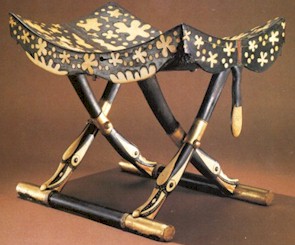
Stool from Tutankhamen Tomb
|
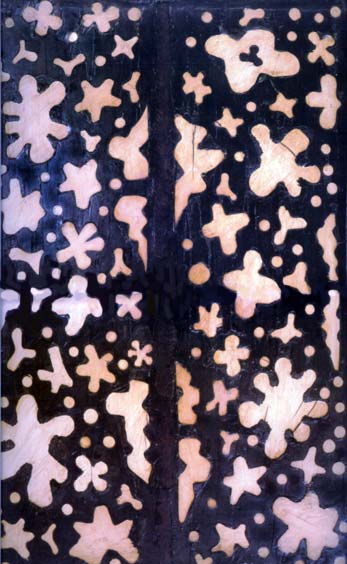
The top of a stool found in the tomb
of Tutankhamen
Armana Period 1340 BCE
|
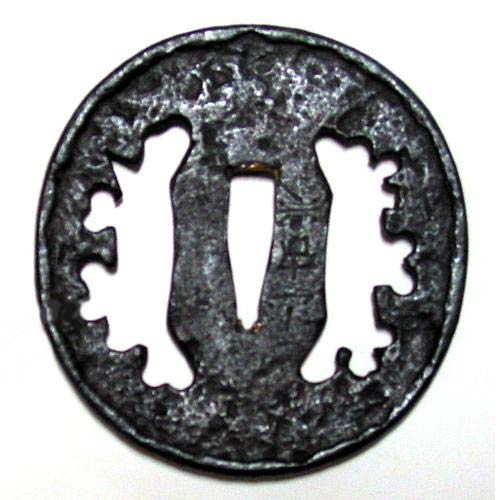
Yamakichi Tsuba with Clouds 16th century
Japan |
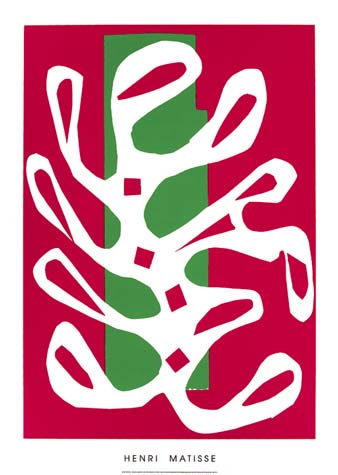
Post impressionist early modern design by Henri
Matisse
|
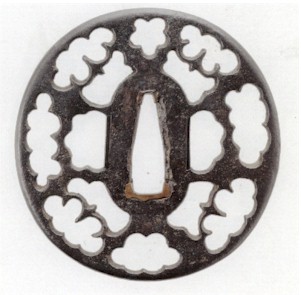
Sukashi Tsuba
|

Post impressionist early modern design by Henri Matisse |
|
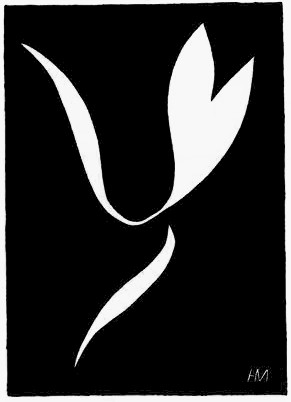
Post impressionist early modern design by Henri Matisse
|
To
assist putting the sukashi Tsuba art
objects into their historical Context See the following pages:
The life and times of St.
Francis Xavier, (1512- 1552)
Page: 1
Xavier meets Otomo Sorin the King of Bungo, (1550)
Page: 2
William Adams arrives in Japan, (1600 )
Page: 3
The Epic Journey of
Hasekura Tsunenaga, (1613-1620)
Page: 4
James
I of England (1603-1625)
and his personal correspondence with Tokugawa Ieyasu Page:
5
Hosokawa
Tadaoki (Sansai) Page
7
This Page was co-authored
by Chester Comstock in co-operation with Kanayama, For additional
information on Kanayama and his collection of Japanese Antiquities
from the 16th and 17th Centuries see:
Kanayama Discusses Sukashi Tsuba
Chester Comstock is the Publisher and Editor of Artsales.com and
the founder and owner of
Comstock Sculpture Studio.
|
